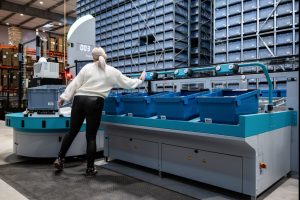Building resilience
Warehouse robotisation is key to building resilience in an unstable economic environment, says Thomas Genestar.

GLOBAL SUPPLY chains are operating under considerable strain, with issues such as international conflicts, product shortages, new tariffs and stricter regulations causing significant disruption. Warehouse operators are very much in the middle of this maelstrom, and robotisation of the warehouse will be key to successfully navigating these challenges.
While certain geopolitical and economic factors cannot be controlled, there are always things you can do as a business to soften the blow. As an organisation in the logistics sector, it’s important to fortify your own operations to build resilience. This is where robotisation has a major role to play.
Effective stock management streamlined picking processes and efficient order preparation are critical. Start by mapping these processes to identify areas for improvement. Once optimised, warehouse automation through robotics becomes a vital ally, automating essential tasks. And goods-to-person systems reduce walking distances and improve operator ergonomics, speeding up order preparation. This not only reduces errors but also ensures 24/7 operational continuity, regardless of external disruptions.
Seasonal peaks, unexpected order surges and labour shortages also present a challenge for logistics operations. Robotic automation systems feature a modular fleet of autonomous mobile robots (AMRs), allowing businesses to scale up or down flexibly in response to fluctuating demand. This adaptability ensures operational efficiency in both short- and long-term scenarios.
Such systems should be simple to install and deliver smooth flow capacity, with the option to easily add new robots to active systems in minutes depending on demand. They should also be able to adapt to both business-to-business and business-to-consumer models and operate in both environments simultaneously when required.
Additionally, geographical reconfiguration is an important consideration, and warehouses should be close to consumers or production sites to minimise delays and guarantee product availability.
To remain a step ahead and prepare for economic instability, or business fluctuations, having a robotic automated system is a real asset to manage operations. Flexibility and scalability provide our clients an outstanding additional value, even more when economic disruptions emerge. Robotic systems integrate with warehouse management systems and provide real-time visibility and traceability of inventory, helping businesses plan for the toughest of periods. This results in faster fulfilment, better working conditions, and higher customer satisfaction.
Thomas Genestar, managing director of Western Europe at Exotec






